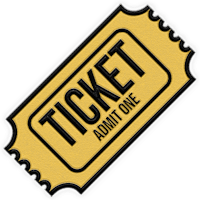Use the Settings Panel in each Studio experience to add information that helps search engines more easily find your content. This article is a great place to start if you’re new to Studio and are thinking about how you can incorporate it into your SEO strategy.
To access this panel, simply open an experience in Studio and click the Settings gear in the top right-hand corner. The Settings Panel contains five sections - Experience settings, SEO, Social, Custom HTML, and Performance.

Experience Settings
In the Experience settings tab, there are several fields:
Experience Title
This displays the experience's title in your Ceros Admin so it’s easy to find when you have multiple experiences.
It also creates the first part of your site’s Page Title, which is also displayed in search engine results and at the top of your web browser.
Your title should be brief, and descriptive, and include any target keywords you’re trying to rank for with the page. For example, if your experience is about prom dresses, a title like “Cute Prom Dresses” would be an appropriate page title.
Experience URL
Tells the internet where visitors can find your site. It is automatically added to the end of your project URL and applied even if you’re using a vanity domain.
This bit of text can contain hyphens and numbers, but should not contain any spaces or special characters. You can also add additional keywords about your experience here; just be sure to separate each word with a hyphen.
Redirect URL
Where users, visiting with an unsupported browser, will be redirected.
SEO
This tab contains options and fields that let you define what search engines will see when they index the content of your experiences. The information you provide here will directly impact the search rankings for your Studio content.

Enable SEO for both published experience and embeds
With this option enabled, all instances of the published experience, either standalone or embedded on another site, will be indexed by search engines. This SEO option is enabled by default.
Enable SEO for embeds only
This option will tell search engines to ignore the experience unless it is embedded on another site.
Disable SEO
If this content is for internal use only and you don’t want search engines to index it, select this option. This will tell search engines to ignore the experience completely.
Title Keywords & Meta Description
The Title Keywords and Meta Description are indexed and displayed in search results on Google and other search engines. They provide a brief teaser to let visitors determine whether your content is what they’re looking for.
Canonical URLs signal to search engines a firm hint as to which URL a page’s contents should be credited. The Canonical URL is located in the <head> of a web document and looks something like this:
<link rel=canonical href=http://example.com/page.html/>NoScript HTML
Every experience has NoScript HTML automatically generated from the text content and image alt-text tags you include in the Studio. If you prefer to create a more structured, tagged version of your HTML content, you can override the default NoScript HTML in this field.
The content that you put in the NoScript HTML box will be presented to search engines as an alternative version to your main Studio experience. Use standard HTML markup on your content, then simply copy and paste it into this field. An easy way to do this is to do the following:
Publish and view your experience
Open Developer Tools/View Source
Copy the automatically generated “NoScript”
Paste it into your favorite HTML editor, and mark it up as you see fit
Note: Custom NoScript HTML must be representative of your Studio experience. Search engines will penalize your ranking if your NoScript content is different from what’s in your experience.
Social
To optimize your experience for social media sharing, you can customize the title, description, and photo you want to appear within posts for Open Graph-enabled platforms and Twitter sharing.

How to Customize Your Posts
Within the Settings Panel of your experience, click on the Social tab.
Enter the title, description, and photo you want to appear on social media (both for your Open Graph sites and for Twitter).
Publish your experience. Now, when you share the Experience URL on social media or utilize a social media-related interaction such as On Click > “Post to Facebook”, you should see your new custom metadata populated in the post.
For more information on Social Sharing, take a look at this article: Preparing Your Content for Social Media Sharing
Custom HTML

The Custom HTML field is where you can drop external code snippets into your experience. This includes:
Marketing automation tracking pixels
Tracking codes for SiteCatalyst, Google Tag Manager, and other analytics platforms. (Note: Google Tag Manager is best implemented via Ceros integration)
Retargeting pixels for display and social ads
Third-party pop-up forms from services like SumoMe or OptIn Monster
A/B testing pixels from Optimizely and other services
And other services
Performance

The Performance tab has optional settings that you can enable to improve performance and decrease initial experience load times. These are:
Progressive Image Loading
This feature will display your experience earlier by initially showing low-resolution images while high-resolution images load in the background.
Lazy Loading
This feature will shorten load times by displaying the experience as soon as everything within the initial browsing window has loaded (rather than fully loading the first and second pages before displaying the experience).
Text Rendering Mode
The Text Rendering Mode dictates the way that search engines and screen readers can understand your content. Additionally, each option results in slightly different rendering effects of exactly how your content is positioned. The default mode will be Component which is optimal for ADA compliance as well as SEO.
For more information on text rendering, check out this article.
Note: Text rendering settings are only present on experiences using the legacy Text Tool


















